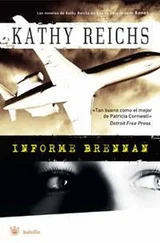Kathy Reichs - Grave Secrets
Здесь есть возможность читать онлайн «Kathy Reichs - Grave Secrets» весь текст электронной книги совершенно бесплатно (целиком полную версию без сокращений). В некоторых случаях можно слушать аудио, скачать через торрент в формате fb2 и присутствует краткое содержание. Жанр: Старинная литература, на английском языке. Описание произведения, (предисловие) а так же отзывы посетителей доступны на портале библиотеки ЛибКат.
- Название:Grave Secrets
- Автор:
- Жанр:
- Год:неизвестен
- ISBN:нет данных
- Рейтинг книги:4 / 5. Голосов: 1
-
Избранное:Добавить в избранное
- Отзывы:
-
Ваша оценка:
- 80
- 1
- 2
- 3
- 4
- 5
Grave Secrets: краткое содержание, описание и аннотация
Предлагаем к чтению аннотацию, описание, краткое содержание или предисловие (зависит от того, что написал сам автор книги «Grave Secrets»). Если вы не нашли необходимую информацию о книге — напишите в комментариях, мы постараемся отыскать её.
Grave Secrets — читать онлайн бесплатно полную книгу (весь текст) целиком
Ниже представлен текст книги, разбитый по страницам. Система сохранения места последней прочитанной страницы, позволяет с удобством читать онлайн бесплатно книгу «Grave Secrets», без необходимости каждый раз заново искать на чём Вы остановились. Поставьте закладку, и сможете в любой момент перейти на страницу, на которой закончили чтение.
Интервал:
Закладка:
I told him what I’d learned at police headquarters, leaving out only Chantale Specter’s last name.
“André Specter, the Canadian ambassador. Heavy.”
“You know?”
“Detective Galiano told me. It’s why I let him ambush you the day we returned from Chupan Ya.”
I couldn’t be annoyed. In truth, I was relieved Mateo understood the implications of what I would be doing in the days to come.
I withdrew the vial from my pack and set it on the desk. He read the label, squinted at the contents, then looked at me.
“Fetal?”
I nodded. “I spotted cranial fragments in some of the photos.”
“Age?”
“I have to check Fazekas and Kósa.”
I referred to a volume titled Forensic Fetal Osteology, the anthropologist’s bible on prenatal skeletal development. Published in Hungary in 1978 and long out of print, copies were jealously guarded by those lucky enough to possess them.
“There’s one in the collection.”
“Done with the scope?”
“Almost.” He stood. “I should finish about the time you wrap up with Nordstern.”
My eyes rolled so far back I feared they might strike my frontal lobe.
“Missed you yesterday.”
“Uh huh.”
“Señor Reyes said you’d be tied up until Saturday.”
“We have thirty minutes, sir. What can I help you with?”
I’d swapped sides of Mateo’s desk, and Nordstern now sat where I had been.
“Right.” He pulled a tiny recorder from a pocket and waggled it.
“Do you mind?”
I looked at my watch while he played with buttons.
“O.K.,” he said, leaning back. “Tell me what went on down here.”
The question surprised me.
“Didn’t you cover that with Elena?”
“I like to get different points of view.”
“It’s historic record.”
He raised shoulders, palms, and eyebrows.
“How far back do you want to go?”
He gave the same annoying shrug. O.K., asshole. Human Rights Abuses 101.
“From the sixties to the nineties, many Latin American countries were gripped by periods of violence and repression. Human rights were trampled, with most atrocities being committed by the reigning military governments.
“The early eighties saw a shift toward democracy. With that came a need to investigate human rights violations of the recent past. In some countries those investigations led to convictions. In others various amnesty proclamations allowed the guilty to skate prosecution. It became clear that outside investigators were essential if real facts were to be unearthed.”
Nordstern sat there like a student not interested in what the teacher is saying. I shifted to something more concrete.
“Argentina is a good example. When Argentina returned to democracy in eighty-three, the National Commission on the Disappearance of Persons, CONADEP, determined that close to nine thousand people had been ‘disappeared’ during the previous military regime, the large majority kidnapped by security forces, taken to illegal detention centers, tortured, and killed. Bodies were either dumped from airplanes into the Argentine Sea or buried in unmarked graves.
“Judges began ordering exhumations, but the doctors placed in charge had little experience with skeletal remains and no training in archaeology. Bulldozers were used, bones were broken, lost, mixed up, and left behind. Needless to say, the identification process did not go well.”
I was providing the ultra-condensed version.
“In addition, many of these doctors had themselves been complicit in the slaughter, either by omission or commission.”
An image of Díaz flashed into my mind. Then Díaz and Dr. Lucas at the Paraíso.
“Anyway, for all these reasons, it was deemed necessary to establish a more rigorous scientific protocol and to utilize experts not subject to the influence of suspected perpetrators.”
“That’s where Clyde Snow came in.”
“Yes. In eighty-four, the American Association for the Advancement of Science, AAAS, sent a delegation, which included Clyde Snow, to Argentina. The Argentine Forensic Anthropology Team, EAAF, was founded that year, and has been active ever since.”
“Not just in Argentina.”
“Hardly. The EAAF has worked with human rights organizations in Bosnia, East Timor, El Salvador, Guatemala, Paraguay, South Africa, Zimbabw—”
“Who picks up the tab?”
“Team members are paid from the EAAF’s general budget. In most of these countries human rights institutions have very limited resources.”
Knowing Mateo’s goal, I pursued the topic.
“Money is a chronic problem in human rights work. In addition to worker salaries, there are expenses for travel and local arrangements. Funding for a mission may come entirely from the EAAF, or in Guatemala, the FAFG, or from a local or international organization.”
“Let’s talk Guatemala.”
So much for the funding pitch.
“During the civil war here—which lasted from 1962 until 1996— one to two hundred thousand people were killed or ‘disappeared.’ It’s estimated that another million were displaced.”
“Most being civilians.”
“Yes. The UN Guatemalan Commission for Historical Clarification concluded that ninety percent of all human rights violations were committed by the Guatemalan army and its allied paramilitary organizations.”
“The Mayans really took it in the pants.”
The man was revolting.
“Most victims were Mayan peasants, many with no involvement in the conflict. The military swept through the countryside killing anyone they even suspected of being a guerrilla supporter. The highland provinces of El Quiché and Huehuetenango contain hundreds of unmarked graves.”
“Strictly scorched earth.”
“Yes.”
“And then they played innocent.”
“For years successive Guatemalan governments denied that these massacres ever occurred. The current government has abandoned that charade, but it’s unlikely anyone will go to jail. In 1996, a peace accord was signed between the Guatemalan government and a coalition of the main guerrilla groups, formally ending the conflict. That same year immunity was granted to persons accused of committing human rights violations during the war.”
“So why this?” Nordstern waved a hand around the office.
“Survivors and relatives began to speak out, demanding an investigation. Even if they couldn’t expect prosecution, they wanted to cast light on what had taken place.”
I thought of the little girl at Chupan Ya. I felt like an apologist for the offenders to speak of their crimes in such a sterile and detached way. The victims deserved a more impassioned recitation.
“But even before that, in the early nineties, Guatemalan groups representing families of the victims began inviting foreign organizations, including the Argentines, to carry out exhumations. The Argentines, along with scientists from the U.S., trained local Guatemalans. That led to the operation you see here. Over the past decade Mateo and his team have conducted scores of forensic investigations and have established a degree of independence from the organs of government.”
“Like Chupan Ya.”
“Yes.”
“Tell me about Chupan Ya.”
“In August 1982, soldiers and civil patrollers entered the village—”
“Under the command of Alejandro Bastos,” Nordstern cut in.
“I don’t know that.”
“Go on.”
“You seem to know more about this than I do.”
Again the shrug.
What the hell. I’d had enough of this man. The massacres were just a story to him. To me they were more. So much more.
I stood.
“It’s getting late, Mr. Nordstern. I have work to do.”
“Chupan Ya or the septic tank?”
Читать дальшеИнтервал:
Закладка:
Похожие книги на «Grave Secrets»
Представляем Вашему вниманию похожие книги на «Grave Secrets» списком для выбора. Мы отобрали схожую по названию и смыслу литературу в надежде предоставить читателям больше вариантов отыскать новые, интересные, ещё непрочитанные произведения.
Обсуждение, отзывы о книге «Grave Secrets» и просто собственные мнения читателей. Оставьте ваши комментарии, напишите, что Вы думаете о произведении, его смысле или главных героях. Укажите что конкретно понравилось, а что нет, и почему Вы так считаете.








